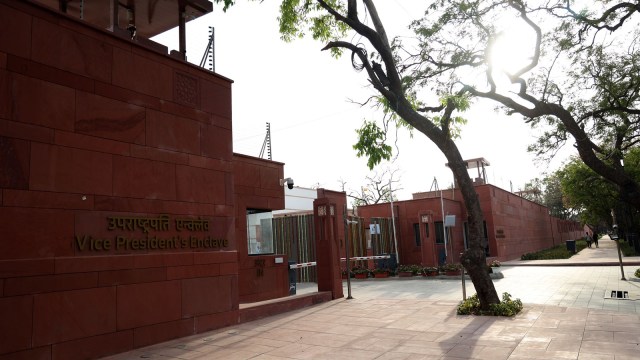High Stakes, Strategic Choices for NDA
With the resignation of Vice President Jagdeep Dhankhar on July 21, the political theatre in Delhi has swiftly turned to one pressing question: Who’s next?
The Vice President of India is not a mere ceremonial figure. As the ex-officio Chairperson of the Rajya Sabha, the VP plays a decisive role in steering legislative proceedings. The choice of successor will be a clear indicator of the NDA’s political messaging, social outreach, and electoral priorities—especially with crucial state elections, including Bihar, looming large.
While the NDA is tight-lipped, several names are floating in political corridors. Each name brings a distinct political signal. And each choice is potentially strategic, not accidental.
Leading the speculative race is Harivansh Narayan Singh, the respected former Deputy Chairman of the Rajya Sabha. A former journalist and two-term MP from Bihar, Harivansh enjoys credibility across party lines. His tenure as Deputy Chairman was marked by dignity, restraint, and procedural competence—qualities rare in today’s polarized Parliament. He is not just a familiar face in the Rajya Sabha; he is a reassuring one. If Prime Minister Modi is looking for continuity and calm, Harivansh would be a natural fit. His Bihar roots, too, add electoral value.
Then there’s Mukhtar Abbas Naqvi, the BJP’s most prominent Muslim leader until he exited Parliament in 2022. A moderate voice, a seasoned parliamentarian, and a party loyalist—Naqvi ticks many boxes. His nomination could counter accusations that the BJP is ignoring minorities, especially Muslims, for top constitutional posts. In the past, BJP stunned critics by backing Dr A.P.J. Abdul Kalam for the presidency. A similar masterstroke now could silence detractors and reinforce the NDA’s inclusive credentials ahead of the 2029 general elections.

If governance credentials and current relevance are the yardsticks, Manoj Sinha stands tall. The current Lieutenant Governor of Jammu and Kashmir has deftly handled one of India’s most complex administrative postings post-Article 370 abrogation. A three-time MP from Ghazipur and former telecom and railways minister, Sinha blends political experience with bureaucratic finesse. Importantly, he too hails from Bihar. His selection could be BJP’s electoral pitch to the state’s voters—an appeal to pride and performance in one stroke.
In a political atmosphere where women’s empowerment has become a major talking point—both in Parliament and across states—Sumitra Mahajan could emerge as a surprise consensus candidate. The former Lok Sabha Speaker, eight-time MP from Indore, and one of the most dignified presiding officers in recent memory, Mahajan enjoys cross-party respect. Her clean record and maternal image could project BJP’s softer face without compromising on experience or authority.
And then there’s Ravi Shankar Prasad, a man who has served with distinction in ministries ranging from Law & Justice to IT and Communications. A senior advocate in the Supreme Court, Prasad is known for his articulate, combative style—qualities the NDA may find useful in a fractious Upper House. Like Sinha and Harivansh, he too is from Bihar. His nomination could help BJP corner the fractured Mahagathbandhan ahead of the state polls.
But if there’s one thing Prime Minister Narendra Modi has demonstrated over the years, it’s his penchant for surprise. From backing Kovind to fielding Murmu for President, Modi has rarely taken the predictable route when it comes to top constitutional appointments. Could another dark horse be waiting in the wings?
This isn’t just about who will sit in the Rajya Sabha Chair. The next Vice President will symbolically represent the NDA’s roadmap for the next phase of governance and electoral outreach. Whether the party opts for parliamentary experience, regional balancing, gender representation, or minority outreach, one thing is certain: the choice will be loaded with political intent.
The stakes, both symbolic and strategic, couldn’t be higher.






